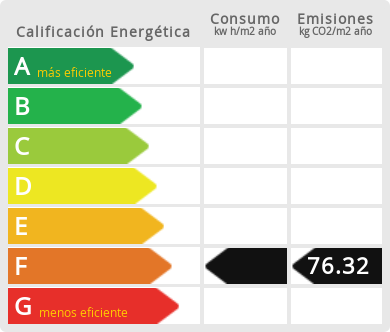Rif. 91888 Affascinante Proprietà Fronte Mare a Ses Tanques. Minorca Prezzo: 1.950.000 €












- Descrizione
- Informazioni sulla zona
- Maggiori informazioni
- Invia ad un amico
Descrizione
Descrizione
La proprietà, situata in prima linea sul mare, offre viste panoramiche che si estendono fino all'orizzonte. Le sue sei ampie camere da letto e i sei bagni assicurano comfort e spazio per la famiglia e gli amici. La casa comprende una cucina integrata, un soggiorno e una sala da pranzo, progettati per massimizzare il comfort e la convivialità.
Le splendide terrazze, coperte e scoperte, offrono l'ambiente perfetto per rilassarsi e godere della piacevole brezza marina. La piscina comune, situata accanto alla veranda occidentale della casa, è il luogo ideale per rinfrescarsi e ammirare i magnifici tramonti.
Inoltre, la proprietà dispone di un ampio garage e di un'area parcheggio, garantendo ampio spazio e comodità per tutti i veicoli. Questa proprietà è perfetta sia come seconda casa per le fughe che come residenza per tutto l'anno, circondata dalle migliori viste e da un ambiente tranquillo e bello.
Non perdere l'opportunità di scoprire questo gioiello mediterraneo. Contattaci per maggiori informazioni e per organizzare una visita. Siamo sicuri che ti innamorerai di questa spettacolare casa a Ses Tanques!
Informazioni sulla zona
Informazioni sulla zona
(Posizione approssimativa)
Sant Climent forms part of the district of Mahón, half way between the capital and the urbanisations of Cala en Porter, Calescoves, Binidali and Es Canutells. Prehistoric times have gifted this village with numerous archaeological sites such as the Talayot of Perelló or the basilica of Fornàs, among others. Its strategic position close to the airport of Mahón makes it a privileged spot in terms of communication and it is a regular spot for stopping for lunch or breakfast before or after taking a flight. The kitchens of the restaurants of Sant Climent are highly appreciated by many and include famous tourists such as the renowned Spanish singer Joan Manuel Serrat.
Mahon is the capital of Menorca, the main communication centre with its airport and port, considered the longest in the Mediterranean with a length of more than 7 kms. Home to the island’s government (Consell Insular de Menorca) and the majority of administrative offices, its old centre reflects the period of British domination which lasted for nearly a century, the style of which which influenced the architecture of the majority of its buildings. It is also a city of services which has the Mateu Orfila hospital as the main health centre of the whole island. The city also boasts sporting and cultural facilities such as the Teatro Principal of Mao, the oldest opera house in Spain. Some of its urbanisations and neighbouring areas live life at a slower pace, such as San Climent, LLumaçanes, Es Grau or Cala Llonga.
Those who visit Menorca have stated that it is one of the paradises of the western Mediterranean, an island that history has always been an object of desire because of its strategic position and which now has ended up becoming one of the most attractive tourist destinations. However, it is not only a dream spot for holidays, but also for living. Menorca allows you to experience for yourself the quality of life that you had always imagined, through the combination of small details that make up its landscape, people, tranquillity, light, traditions and fine food.
Geographically, Menorca is the easternmost and northernmost island of the Balearic Islands, declared a Biosphere Reserve in 1993 by UNESCO. It has a coastline of 701 km² and 216 kilometres of, along which are distributed more than 70 beaches. Blessed with a typically Mediterranean climate with annual average temperatures of 16.5 degrees, it currently has a population of 96,000, concentrated into eight districts: Maó (administrative capital of the island), Ciutadella (the old capital), Alaior, Ferreries, Es Mercadal, Es Castell, Sant Lluís and Es Migjorn Gran. There are three other towns, Sant Climent, Llucmaçanes and Fornells, the first two in the district of Maó and the other in Es Mercadal. Maó, located in the east, and Ciutadella, in the west, are the two most inhabited towns on the island.
Socio-economically, unlike the other islands of the Balearic archipelago, Menorca has, over time, had the good fortune to be able maintain a perfect balance between the traditional industries of footwear, costume jewellery and agriculture favouring the gentle development of the tourist sector and thus enabling the island to preserve its countryside and beaches. This environmental sensitivity still exists among all its inhabitants, guaranteeing a unique setting, perfect for family, sports and cultural tourism.

